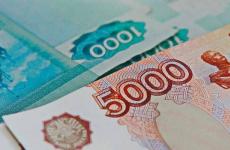China's GDP in dollars. The most powerful economies in the world. The "weakest" states
GDP at purchasing power parity is a parameter that is calculated based on the comparative cost of goods and services in the country and the ability of the population to purchase them. There is no consensus among economists whether GDP at PPP is a significant figure, mainly due to doubts about the methodology for calculating this parity itself, so they often use ordinary GDP per person.
Mathematically, parity should bring the ability to buy the same goods in different countries for local currency to the same value, that is, to a comparable price level. In practice, the goods in the basket are of different quality, and transportation costs and taxes are not taken into account at all, which as a result causes a discrepancy with other indicators, for example, with spending on food. However, the World Bank, Eurostat and the International Monetary Fund keep track of this indicator. The calculation is provided in US dollars, the price level in the economy of which in this case is taken as the starting point.
For Russia, GDP data calculated using incremental power parity look much more attractive than standard GDP per capita: $25,700 versus $8,600, respectively. In the table of ranks these are 55th and 72nd place. Compared to last year, the Russian Federation remained in its previous position.
List of countries by GDP per capita, calculated by purchasing power parity 2017, in $
| Place | A country | |
|---|---|---|
| 1 | Qatar | 129959.03 |
| 2 | Luxembourg | 103388.24 |
| 3 | Singapore | 89276.25 |
| 4 | Macau | 85609.73 |
| 5 | Brunei | 80048.65 |
| 6 | Kuwait | 71432.8 |
| 7 | Norway | 70066.25 |
| 8 | United Arab Emirates | 68717.03 |
| 9 | San Marino | 66180.69 |
| 10 | Ireland | 60818.86 |
| 11 | Switzerland | 60501.19 |
| 12 | Hong Kong | 59997.99 |
| 13 | USA | 58952.03 |
| 14 | Saudi Arabia | 54424.99 |
| 15 | Netherlands | 51885.67 |
| 16 | Bahrain | 51374.1 |
| 17 | Sweden | 50757.32 |
| 18 | Iceland | 49723.73 |
| 19 | Australia | 49481.87 |
| 20 | Taiwan | 49399.52 |
| 21 | Austria | 49237.15 |
| 22 | Germany | 48836 |
| 23 | Denmark | 47992.62 |
| 24 | Canada | 47307.16 |
| 25 | Belgium | 44990.7 |
| 26 | Oman | 44555.52 |
| 27 | Great Britain | 43267.78 |
| 28 | France | 42799.5 |
| 29 | Finland | 42502.26 |
| 30 | Japan | 39378.94 |
| 31 | South Korea | 39156.42 |
| 32 | Malta | 39106.63 |
| 33 | New Zealand | 38075.26 |
| 34 | Puerto Rico | 37855.63 |
| 35 | Spain | 37522.57 |
| 36 | Italy | 36989.91 |
| 37 | Israel | 35260.75 |
| 38 | Cyprus | 34110.29 |
| 39 | Czech | 33756.77 |
| 40 | Trinidad and Tobago | 33297.83 |
| 41 | Slovenia | 32940.34 |
| 42 | Slovakia | 32514.73 |
| 43 | Lithuania | 31386.11 |
| 44 | Estonia | 30850.15 |
| 45 | Portugal | 29215.16 |
| 46 | Poland | 29065.5 |
| 47 | Malaysia | 28497.68 |
| 48 | Seychelles | 28375.87 |
| 49 | Hungary | 28254.76 |
| 50 | Equatorial Guinea | 28015.46 |
| 51 | Greece | 27752.7 |
| 52 | Latvia | 27333.26 |
| 53 | Saint Kitts and Nevis | 26682.87 |
| 54 | Bahamas | 25958.84 |
| 55 | Russia | 25740.37 |
| 56 | Antigua and Barbuda | 24570.37 |
| 57 | Kazakhstan | 24402.74 |
| 58 | Chile | 24382.24 |
| 59 | Panama | 24176.75 |
| 60 | Croatia | 23171.34 |
| 61 | Romania | 23071.45 |
| 62 | Argentina | 22984.62 |
| 63 | Uruguay | 22748.21 |
| 64 | Türkiye | 22002.65 |
| 65 | Mauritius | 21538.25 |
| 66 | Bulgaria | 20691.4 |
| 67 | Gabon | 20008.44 |
| 68 | Lebanon | 18872.48 |
| 69 | Iran | 18591.03 |
| 70 | Mexico | 18392.29 |
| 71 | Turkmenistan | 17837.25 |
| 72 | Belarus | 17836.89 |
| 73 | Azerbaijan | 17761.01 |
| 74 | Botswana | 17700.31 |
| 75 | Montenegro | 17673.12 |
| 76 | Barbados | 17643.57 |
| 77 | Thailand | 17454.06 |
| 78 | Costa Rica | 16784.86 |
| 79 | Iraq | 16661.62 |
| 80 | Dominican Republic | 16535.65 |
| 81 | Suriname | 16458.29 |
| 82 | Palau | 16318.33 |
| 83 | China | 16171.99 |
| 84 | Libya | 16165.13 |
| 85 | Maldives | 15895.82 |
| 86 | Macedonia | 15341.16 |
| 87 | Algeria | 15245.83 |
| 88 | Brazil | 15138.98 |
| 89 | Colombia | 14627.24 |
| 90 | Serbia | 14561.34 |
| 91 | Venezuela | 14539.05 |
| 92 | Grenada | 14073.96 |
| 93 | South Africa | 13297.6 |
| 94 | Peru | 13077.16 |
| 95 | Jordan | 12709.86 |
| 96 | Namibia | 12668.76 |
| 97 | Egypt | 12551.88 |
| 98 | Albania | 12456.77 |
| 99 | Mongolia | 12426.64 |
| 100 | Saint Lucia | 12264.35 |
| 101 | Indonesia | 12258.79 |
| 102 | Tunisia | 12044.12 |
| 103 | Dominica | 11989.57 |
| 104 | Saint Vincent and the Grenadines | 11790.68 |
| 105 | Sri Lanka | 11764.56 |
| 106 | Bosnia and Herzegovina | 11472.08 |
| 107 | Georgia | 10633.65 |
| 108 | Ecuador | 10227.32 |
| 109 | Fiji | 9762.03 |
| 110 | Butane | 9570.41 |
| 111 | Jamaica | 9297.12 |
| 112 | Paraguay | 9181.63 |
| 113 | Armenia | 9051.88 |
| 114 | Salvador | 8866.45 |
| 115 | Morocco | 8730.52 |
| 116 | Belize | 8671.89 |
| 117 | Swaziland | 8574.11 |
| 118 | Ukraine | 8526.92 |
| 119 | Guyana | 8174.43 |
| 120 | Guatemala | 8147 |
| 121 | Philippines | 8035.34 |
| 122 | Angola | 7460.74 |
| 123 | Republic of the Congo | 7184.25 |
| 124 | India | 7098.05 |
| 125 | Cape Verde | 6938.54 |
| 126 | Bolivia | 6848.01 |
| 127 | Vietnam | 6818.89 |
| 128 | Uzbekistan | 6721.56 |
| 129 | Myanmar | 6451.46 |
| 130 | Nigeria | 6270.29 |
| 131 | Laos | 6036.96 |
| 132 | Nicaragua | 5451.38 |
| 133 | Tonga | 5420.48 |
| 134 | Pakistan | 5385.48 |
| 135 | Moldova | 5288.41 |
| 136 | Samoa | 5272.6 |
| 137 | Honduras | 5137 |
| 138 | Ghana | 4674.62 |
| 139 | Mauritania | 4647.11 |
| 140 | Sudan | 4519.58 |
| 141 | East Timor | 4421.25 |
| 142 | Bangladesh | 4120.17 |
| 143 | Zambia | 4035.84 |
| 144 | Cambodia | 3964.73 |
| 145 | Ivory Coast | 3778.74 |
| 146 | Tuvalu | 3649.44 |
| 147 | Kyrgyzstan | 3561.57 |
| 148 | Djibouti | 3536.71 |
| 149 | Sao Tome and Principe | 3509.35 |
| 150 | Kenya | 3493.7 |
| 151 | Cameroon | 3360.89 |
| 152 | Marshall Islands | 3298.76 |
| 153 | Tanzania | 3261.55 |
| 154 | Lesotho | 3248.4 |
| 155 | Micronesia | 3079.92 |
| 156 | Yemen | 2906.89 |
| 157 | Tajikistan | 2878.42 |
| 158 | Papua New Guinea | 2781.89 |
| 159 | Vanuatu | 2710.58 |
| 160 | Senegal | 2698.57 |
| 161 | Nepal | 2590.55 |
| 162 | Chad | 2590.26 |
| 163 | Mali | 2335.11 |
| 164 | Benin | 2277.38 |
| 165 | Zimbabwe | 2231.7 |
| 166 | Uganda | 2149.69 |
| 167 | Solomon islands | 2033.14 |
| 168 | Afghanistan | 2003.79 |
| 169 | Ethiopia | 1995.7 |
| 170 | Rwanda | 1994.88 |
| 171 | Burkina Faso | 1853.16 |
| 172 | Kiribati | 1850.58 |
| 173 | Republic of Haiti | 1844.65 |
| 174 | South Sudan | 1841.46 |
| 175 | Gambia | 1687.26 |
| 176 | Sierra Leone | 1626.03 |
| 177 | Guinea-Bissau | 1623.61 |
| 178 | Togo | 1592.46 |
| 179 | Comoros | 1546.93 |
| 180 | Madagascar | 1540.77 |
| 181 | Eritrea | 1332.11 |
| 182 | Mozambique | 1302.13 |
| 183 | Guinea | 1296.79 |
| 184 | Niger | 1166.24 |
| 185 | Malawi | 1164.73 |
| 186 | Liberia | 914.24 |
| 187 | Burundi | 858.99 |
| 188 | Democratic Republic of the Congo | 818.99 |
| 189 | Central African Republic | 694.63 |
According to the IMF. Updated 01/16/2018
Average consumer spending of residents of Kazakhstan (based on purchasing power parity of currencies) was 16% higher than similar indicators in Russia. This was reported by Nezavisimaya Gazeta with reference to the Analytical Center under the Government of the Russian Federation. The publication notes that before this, it was Russia that was the leader among the CIS countries in terms of the average level of consumer spending.
In 2016, the average citizen of Kazakhstan spent $13.8 thousand on personal consumption. The share of the average Russian was 11.9 thousand dollars.
In the calculation, conventional dollars were used, reflecting the purchasing power parity of the Russian ruble and the Kazakh tenge.
If we evaluate consumer spending based on the exchange rate, Russia retains its leadership.
The average Russian spent about 4.5 thousand dollars last year, and a resident of Kazakhstan – 4.1 thousand dollars. However, the Analytical Center experts believe that Russia will soon yield to Kazakhstan in these indicators.
The data for a number of CIS countries is interesting. Kyrgyzstan remains a relatively poor country, but it is approaching Soviet-era living standards. Armenia and Uzbekistan have significantly increased their level of well-being over 25 years.
Ukraine and Georgia dropped in consumption levels over the same period of time by 18% and 16%, respectively. (That is, countries against which armed aggression was carried out by the Russian Federation. Note by A.S.)
Gross domestic product or GDP refers to the totality of all goods produced and services provided during the year by residents in the territory of a particular state. GDP is expressed in so-called final consumer prices.
Structure of gross domestic product
- Results and results of enterprises' activities.
- The results of the work of economic, financial organizations and structures that provide economic services.
- Organizations operating in territories that are within the zone of economic influence of a particular country.
- Enterprises that are controlled by the capital of other countries and investors.
- The result of the activities of foreign companies.
There are two types of GDP:
- Nominal, which is usually understood as the total volume of products and services produced in the country. Nominal GDP is measured in prices that are current today.
- Real, which refers to the volume of products and services produced and provided during a specific period of time. Measured in constant prices.
Gift: 2100 rubles for housing!
When you register using the link in AirBnB, you will receive 2100 rubles to your account.
For this money you can rent a good apartment for 1 day abroad or in Russia. The bonus only works for new accounts.
Characteristics and features of GDP
Gross domestic product allows you to assess the pace, level and features of development of the state’s economy for a year or another period of time. GDP is also used to analyze one or another aspect of economic development, fluctuations in the financial system and the conditions of the economic system.
GDP helps assess the quality and standard of living of the population, its well-being and income for a selected period of time. To quantitatively calculate gross domestic product, the following methods are used:
- The addition of all income in a particular state - people's salaries, interest on capital, profit, rent.
- Summing up expenses - consumer services, investments, government purchases of goods and services, net exports, i.e. export without import.
Both one and the other Both methods should give the same results, or approximately the same.
Basic information about the GDP of all states and territories of the world is a database that is updated every year by World Bank staff. All world development indicators are based on information received from international organizations and national statistical institutes.
The compilation of statistics ends every year on June 30, and the World Bank publishes a new report on global GDP indicators in November or December.
World GDP ranking in 2017
Quantitative indicators of economic development of countries around the world are reflected in US dollars. In 2017, the total GDP for all countries, according to the World Bank, was $76,671,787 million in the United States.
The TOP 10 countries in the world by GDP include:
- USA - $18,153,487.
- China - 11,393,571.
- Japan - 4,825,207.
- Germany - 3,609,439.
- UK - 2,782,338.
- France - 2,605,813.
- India - 2,220,043.
- Italy - 1,914,131.
- Brazil - 1,835,993.
- Canada - 1,584,301.
Thus, the leading economies of the world are American, Chinese, Japanese, German and English. And this trend has been observed for several years.

- Luxembourg.
- Switzerland.
- Qatar.
- Norway.
- Singapore.
- Australia.
- Denmark.
- Iceland.
To determine the efficiency of the economy, it is customary to use not only the characteristics of GDP per capita, but also to determine how purchasing power per capita corresponds to the set of consumer services and goods. TOP 5 countries by this parameter during 2014-2017. formed by such countries as:
- Qatar.
- Luxembourg.
- Singapore.
- Brunei.
- Kuwait.
Of the European countries, this list includes Norway - sixth place, San Marino - eighth, Switzerland - ninth. Other positions are represented by the United Arab Emirates, Hong Kong, and the USA.
Russia's GDP
Russian economy in 2016-2017 demonstrated GDP growth rates, but they lag behind forecasts.
Nominal GDP in 2017 in Russia was 1.469 billion US dollars, and real GDP was 4000 billion US dollars.
In 2018-2019, Russia's GDP will be as follows:
- Revenues will reach 15.25 trillion rubles, which is equal to almost 16% of the country's GDP. The same figure in 2019 will increase to 15.55 trillion rubles.
- Expenditures are planned at 16.5 trillion rubles, which is about 17% of GDP; in 2019, expenses will reach 16.4 trillion rubles.
- The budget deficit in 2018 will be about 1.3 trillion rubles.
According to the World Bank, the Russian GDP in 2018 will increase from 1.3% in 2017 to 1.7%.
The strongest and weakest economies in the world
- The United States, whose leadership is constantly being challenged by China. The GDP is 18 trillion trillion US dollars. The American national currency is recognized as one of the most stable in the world, which ensures successful economic development and high GDP every year. Annual GDP growth is 2.2%, and income per person is 55 thousand US dollars.,
- China - GDP is 11.21 trillion US dollars. The annual increase in gross external product is 10%.
- Japan - GDP is equal to 4.21 trillion US dollars, the gross external product is increasing by 1.5% per year.
- Germany - GDP is equal to 3.413 trillion per year, the figure grows every year by 0.4%.
- Britain - 2.8534 trillion per year.
Significant competition for the United States and China comes from EU countries, whose economies are successfully coping with the consequences of the global financial crisis and are actively developing. The leaders in terms of GDP for 2017 in the EU were:
- Liechtenstein.
- Netherlands.
- Ireland.
- Austria.
- Sweden.
- Germany.
- Finland.
- Italy.
- Britannia.
- Spain.

The world's weakest economies include:
- Venezuela, whose GDP may decline by 3.5% this year.
- Brazil - GDP will fall by 3%.
- Greece - 1.8%.
- Russia - by 0.5%.
- Ecuador - by 0.5%.
- Argentina - GDP will not change, but the economy is not attractive for investment.
Countries such as Venezuela, Zimbabwe, Burundi, Guinea, Yemen, Afghanistan, and Chad are considered the worst for doing business and implementing investment projects.
It is recommended to invest in countries such as China, Rwanda, Tanzania, Mozambique, Bhutan, India, New Guinea, Turkmenistan, Uzbekistan, Burma, Congo, Ethiopia. The economies of these countries are fast growing and developing as they export important products to the world market.
Thus, Uzbekistan has long become the largest supplier of cotton and natural gas, and is now developing the gold market. Ethiopia leads Africa in exports of agricultural products, textiles, and energy resources.
Destroyed in the 1990s. Rwanda is now actively exporting coffee, tea, and minerals, which stimulates economic growth. Tanzania exports gold, Mozambique - natural gas, New Guinea - gold, oil, minerals.
Thus, the countries of Asia and Africa are successfully joining the world economy, competing with European countries.
10 BIGGEST WORLD ECONOMIES IN 2017.
In 2017, China will overtake America in growth rates, but the American economy will still remain the largest in the world. China will supplant the United States only by 2050.
The US economy is the largest in the world. If we combine the economies of countries from 3rd to 10th place on our list, it will still be larger. However, in the future, the United States will lose ground; this list will include developing countries, but France, Italy and Canada will not be on it.
Top 10 countries by GDP in 2017
According to the latest World Bank data, the American economy accounts for 24.3% of the global economy, $18 trillion. China is in second place, its share is 14.8% or $11 trillion of the global economy. Japan is in third place with 6% of the world economy - that's $4.4 trillion.
largest economies in the world
If we take it by continent, Asia has the largest share - 33.84% of world GDP. North America produces 27.95% of world GDP, and Europe 21.37%. These three continents together generate 83.16% of global GDP.
all by country
China's economy is the fastest growing
In the future, the United States will leave the first place in terms of growth rates. In 2016, the Chinese economy grew by 6.7%, while the American economy grew by only 1.6%. China has also overtaken India, which grew the fastest in 2015 (its growth was 6.6% in 2016).
Brazil is the only one of the ten countries whose economy fell by 3.5% compared to 2015.
The most powerful economies by 2050
According to PWC forecasts, thanks to technological breakthroughs, the global economy will double by 2050. China will be the largest, with India in second place. The USA will fall to 3rd place. France will leave the TOP 10, and Britain will take 10th place. Italy won't even be in the top 20. Mexico's economy could become larger than that of Britain or Germany, and six of the world's seven largest economies could become developing countries that would grow faster than developed countries.
The world's largest economies in 2050
Overall, the United States economy is significantly ahead of other countries in terms of absolute GDP. Compared to last year, the increase in US gross domestic product amounted to $726 billion. The gap from China reached 7 trillion. dollars.
Russia took another step up in 2017 (to 13th place), overtaking Australia. According to the IMF, the Russian Federation's GDP increased by $135 billion.
Let us remind you that gross domestic product (Gross Domestic Product) - GDP (GDP) - macroeconomic indicator, reflecting the market value of all final goods and services (that is, intended for direct consumption) produced during the year in all sectors of the economy on the territory of the state for consumption, export and accumulation, regardless of the nationality of the factors of production used. This concept was first proposed in 1934 by Simon Kuznets.
The calculation of the GDP indicator does not include financial transactions, securities transactions, sales on the secondary market (used cars, apartments, houses, clothing, etc.). Financial transactions do not create real value, and the sale of previously used items was already taken into account earlier in the calculation of previous GDP figures.
Gross domestic product is used to characterize the results of production, the level of economic development and the rate of economic growth.
The formula for calculating GDP looks like this:
GDP = W + Q + R + P + T
Where: W - wages paid by business entities, regardless of the presence (absence) of citizenship Q - social insurance contributions and other mandatory payments R - gross profit of business entities P - gross mixed income T - taxes on production and imports (from government subsidies, if any, are deducted from this amount).
World GDP 2017, trillion $
1. USA - 19,284
2. China - 12,263
3. Japan - 4,513
4. Germany - 3,591
5. UK - 2,885
6. France - 2,537
7. India - 2,487
8. Italy - 1,901
9. Brazil - 1,556
10. Canada - 1,530
11. South Korea - 1,379
12. Spain - 1,291
13. Russia - 1,267
14. Australia - 1,262
15. Mexico - 1,166
16. Indonesia - 1,024
17. Netherlands - 0.794
18. Türkiye - 0.791
19. Switzerland - 0.665
20. Saudi Arabia - 0.659
21. Nigeria - 620.95
22. Sweden - 530.29
23. Taiwan - 524.84
24. Poland - 495.39
25. Belgium - 479.68
26. Argentina - 447.83
27. Thailand - 428.76
28. Iran - 409.3
29. Austria - 399.62
30. Norway - 384.47
31. United Arab Emirates - 357.27
32. Philippines - 345.31
33. Malaysia - 344.85
34. Hong Kong - 337.1
35. Israel - 316.77
36. Denmark - 314.27
37. Singapore - 304.1
38. Colombia - 278.59
39. South Africa - 273.73
40. Ireland - 269.74
41. Bangladesh - 246.73
42. Chile - 243.92
43. Finland - 242.27
44. Vietnam - 217.84
45. Portugal - 212.15
46. Greece - 203.22
47. Romania - 194.3
48. Czech Republic - 191.61
49. Peru - 189.71
50. Qatar - 181.26
51. New Zealand - 178.02
52. Algeria - 173.86
53. Iraq - 164.42
54. Venezuela - 149.51
55. Kazakhstan - 135.13
56. Hungary - 120.12
57. Kuwait - 119.9
58. Morocco - 114.34
59. Puerto Rico - 99.47
60. Sudan - 98.55
61. Slovakia - 94.49
62. Ukraine - 93.55
63. Sri Lanka - 91.91
64. Ecuador - 91.16
65. Angola - 86.29
66. Myanmar - 81.97
67. Dominican Republic - 75.37
68. Ethiopia - 74.08
69. Guatemala - 72.09
70. Kenya - 69.07
71. Luxembourg - 63.79
72. Uzbekistan - 61.53
73. Costa Rica - 60.8
74. Panama - 60.51
75. Oman - 56.34
76. Uruguay - 54.94
77. Lebanon - 54.06
78. Croatia - 51.95
79. Bulgaria - 51.44
80. Tanzania - 49.53
81. Belarus - 49.25
82. Libya - 47.79
83. Yemen - 47.18
84. Slovenia - 45.61
85. Lithuania - 45.4
86. Macau - 44.84
87. Tunisia - 44.36
88. Democratic Republic of the Congo - 43.65
89. Jordan - 42.3
90. Ghana - 40.93
91. Serbia - 38.88
92. Ivory Coast - 38.48
93. Turkmenistan - 37.77
94. Bolivia - 37.3
95. Azerbaijan - 36.2
96. Cameroon - 32.63
97. Bahrain - 31.96
98. Latvia - 29.86
99. El Salvador - 28.54
100. Paraguay - 27.91
According to Rosstat, in the first half of 2017, Russia’s GDP growth was more than 6.4% and reached approximately $722 billion, taking into account the average dollar exchange rate for the six months. It is worth noting that earlier official media reported that GDP growth from January to June 2017 was only 1.5% compared to the same period last year. However, making an assessment based on Rosstat data, to which these sources referred, the value turns out to be completely different.
At the end of 2016, Russia's GDP was estimated at $1.28 trillion. According to the World Bank - more than $1.28 trillion, according to Rosstat - 85,880.6 billion rubles. or approximately $1.28 trillion. The data matches.
Russia's GDP growth, 2015-2017 (billion rubles / billion dollars)
Russia's GDP growth forecasts
The IMF predicts that Russia's GDP growth, after declining by 0.2% in 2016, will amount to 1.4% in 2017. The Ministry of Economic Development of the Russian Federation believes that thanks to an increase in lending and investment, Russia's GDP may grow by 2.1% at the end of 2017, and in 2018-2020. – by 2.1-2.3%. According to the Bank of Russia, GDP in 2017 should increase by 1.7-2.2%.
Who has more GDP?
Is Russia that much different from other countries in terms of GDP? For comparison, we compiled a rating of the 10 most developed economies in the world in terms of GDP for 2016, calculated at PPP (purchasing power parity) and compared them in terms of GDP with Russia. Of course, the ranking of the 10 leading countries with GDP based on PPP will differ significantly from the ranking of countries assessed by GDP in current prices. Thus, the leader in terms of GDP at PPP was China ($21,292 billion), and the leader in terms of GDP at current prices was the United States ($18,569 billion).
Comparison of countries by GDP, 2016

GDP per capita
When calculating GDP per capita, the list became completely different. As it turned out, Qatar has the best indicator – $127,660 per person. At the same time, GDP was also calculated using PPP, which better reflects reality in international comparisons.
Comparison of countries by GDP per capita, 2015-2016

In Russia, GDP per capita was $26,490 (53rd place), China (83rd place) and the USA (14th place) did not make it into the top 10, $15,399 and $57,657, respectively. At the same time, our result increased over the year by approximately $282. What does it mean? For every person in Russia, we produced $282 more goods and services than a year earlier. However, this is not the aisle of dreams. In some countries, its GDP even increased by $3,749 - Ireland. One way or another, Russia's GDP is growing.









